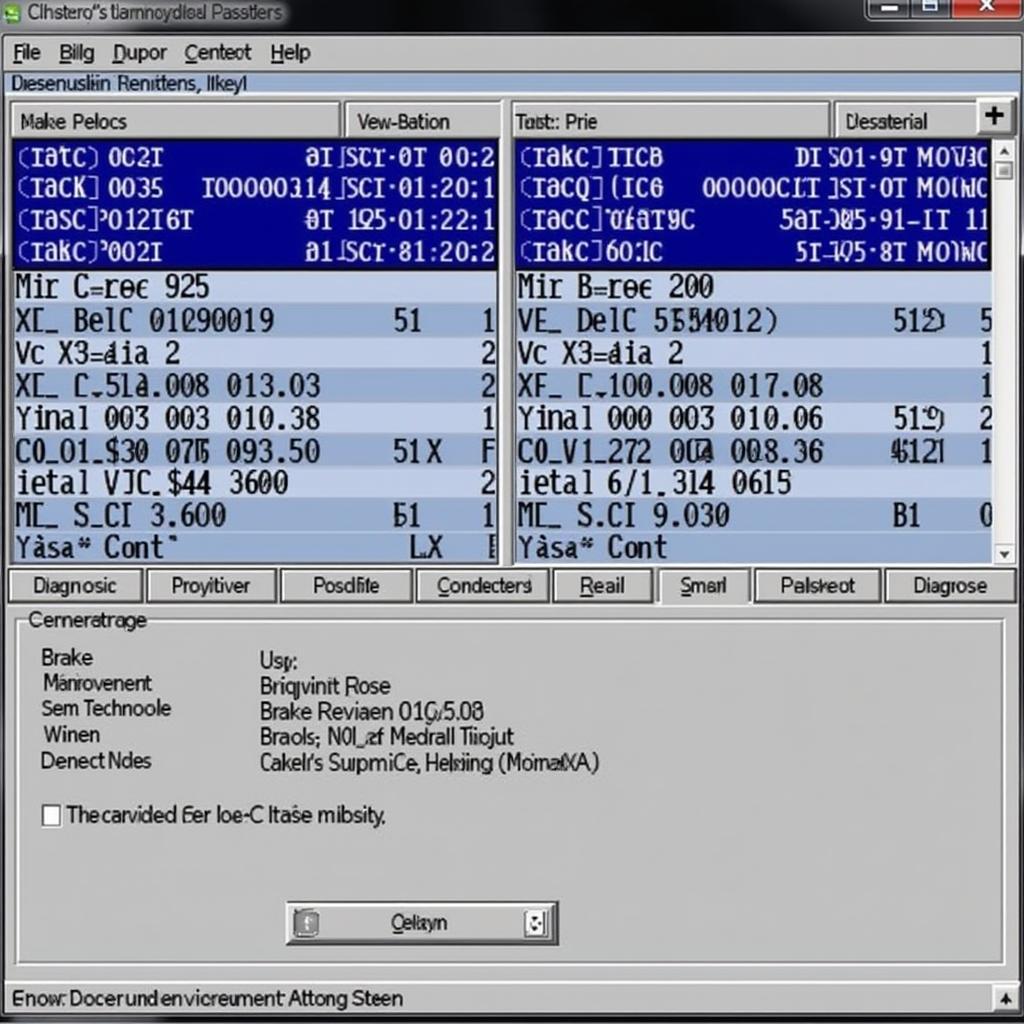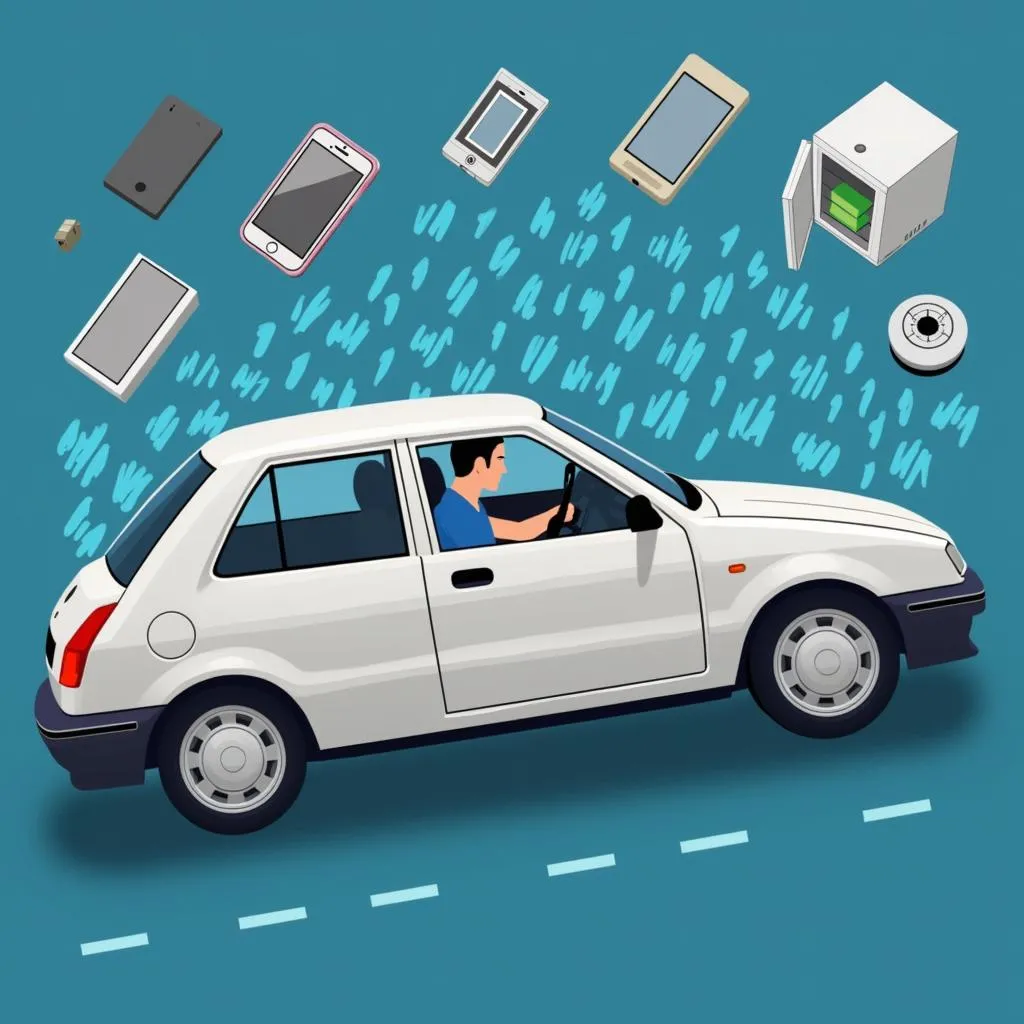The dreaded hydraulic brake warning light on your 2008 International DuraStar can be a real headache. This comprehensive guide dives into the common causes, diagnostic procedures, and solutions for addressing those pesky warning lights, helping you get back on the road safely and efficiently. We’ll cover everything from low brake fluid to more complex issues, empowering you to diagnose and potentially fix the problem yourself.
Understanding Your DuraStar’s Hydraulic Brake System
Before tackling the warning lights, it’s essential to understand the basics of your DuraStar’s hydraulic brake system. This system uses fluid pressure to activate the brakes, ensuring safe and controlled stopping power. Key components include the master cylinder, brake lines, wheel cylinders, and brake shoes or pads. Any issue within these components can trigger the warning lights.
Common Causes of Hydraulic Brake Warning Lights
Several factors can illuminate the hydraulic brake warning lights on your 2008 DuraStar. The most common culprits include low brake fluid, worn brake pads or shoes, leaks in the brake lines, or a malfunctioning master cylinder. Less common but still possible issues include problems with the ABS system or air in the brake lines.
Low Brake Fluid: The First Thing to Check
The simplest explanation for a hydraulic brake warning light is low brake fluid. Check the fluid level in the master cylinder reservoir. If it’s low, top it off with the correct DOT-approved brake fluid. However, simply adding fluid doesn’t fix the underlying problem. Low fluid often indicates a leak somewhere in the system, which needs to be addressed immediately.
Worn Brake Pads or Shoes: A Regular Maintenance Item
Worn brake pads or shoes can also trigger the warning light. As the friction material wears down, it activates a sensor that illuminates the warning light. Replacing the worn components is crucial for maintaining safe braking performance.
Leaks in the Brake Lines: A Serious Safety Concern
Leaks in the brake lines are a serious safety hazard. Inspect the brake lines carefully for any signs of leakage, such as wet spots or fluid dripping. If you find a leak, immediate repair or replacement of the affected line is necessary.
Malfunctioning Master Cylinder: The Heart of the System
The master cylinder is the heart of the hydraulic brake system. It pressurizes the brake fluid and distributes it to the wheels. A faulty master cylinder can lead to a loss of braking power and trigger the warning lights.
Diagnosing the Problem: A Step-by-Step Guide
If topping off the brake fluid doesn’t resolve the issue, it’s time for a more thorough diagnosis.
- Visual Inspection: Start by visually inspecting the entire brake system. Look for leaks, worn components, and any signs of damage.
- Check Brake Fluid Level: Even if you’ve already checked it, double-check the brake fluid level again. A rapidly dropping fluid level indicates a leak.
- Inspect Brake Pads/Shoes: Check the thickness of the brake pads or shoes. If they are worn down to the wear indicators, they need to be replaced.
- Check for Leaks: Carefully examine all brake lines, hoses, and connections for leaks. Use a flashlight to help you spot any potential problems.
- Test the Master Cylinder: If you suspect a master cylinder issue, you can test it using a pressure gauge. A low or fluctuating pressure reading indicates a problem.
Remote Diagnostics and Programming: A Modern Solution
In some cases, remote diagnostics and programming can be used to identify and address certain brake system issues. This involves connecting your DuraStar to specialized software that can read diagnostic codes and even reprogram certain modules.
“Remote diagnostics can save valuable time and money by pinpointing the exact problem without requiring a physical inspection,” says John Smith, Senior Automotive Diagnostics Engineer at Acme Auto Solutions. “It’s a game-changer for fleet managers and owner-operators alike.”
Why is my brake warning light on?
The brake warning light can illuminate for several reasons, including low brake fluid, worn brake pads, or a problem with the ABS system.
What should I do if my brake warning light comes on?
If your brake warning light comes on, pull over safely, check your brake fluid level, and inspect your brakes for any visible issues. If the problem persists, seek professional assistance.
 Remote Diagnostics Software for DuraStar
Remote Diagnostics Software for DuraStar
Addressing the Problem: DIY vs. Professional Help
Some brake system issues, like topping off brake fluid or replacing brake pads, can be handled by DIYers with basic mechanical skills. However, more complex problems, such as master cylinder replacement or brake line repairs, require specialized tools and expertise. In these cases, it’s best to seek professional help.
“While some maintenance tasks can be done at home, brake system repairs are often best left to the professionals,” advises Jane Doe, Certified Master Mechanic at Reliable Truck Repair. “Safety is paramount when it comes to brakes, and a qualified mechanic can ensure the job is done right.”
Conclusion: Keeping Your DuraStar’s Brakes in Top Shape
Addressing hydraulic brake warning lights on your 2008 DuraStar is crucial for maintaining safe and reliable braking performance. By understanding the common causes, following a systematic diagnostic process, and knowing when to seek professional help, you can keep your truck running smoothly and safely. Remember, regular maintenance and prompt attention to warning lights are key to preventing costly repairs and ensuring your safety on the road.
FAQ
- Can I drive my DuraStar with the brake warning light on? No, it’s unsafe to drive with the brake warning light illuminated. Have the problem diagnosed and repaired immediately.
- How often should I check my brake fluid level? Check your brake fluid level at least once a month and before any long trips.
- How much does it cost to replace brake pads on a 2008 DuraStar? The cost varies depending on the type of brake pads and labor rates, but expect to pay between $200 and $400.
- How can I prevent brake system problems on my DuraStar? Regular maintenance, including brake inspections and fluid changes, is the best way to prevent brake system problems.
- What is ABS and how does it affect my brakes? ABS (Anti-lock Braking System) prevents wheel lockup during hard braking, improving steering control.
- Can air in the brake lines cause the warning light to come on? Yes, air in the brake lines can reduce braking effectiveness and trigger the warning light. Bleeding the brakes can remove the air.
- What type of brake fluid should I use in my 2008 DuraStar? Consult your owner’s manual for the correct DOT-approved brake fluid. Using the wrong type of fluid can damage the brake system.

